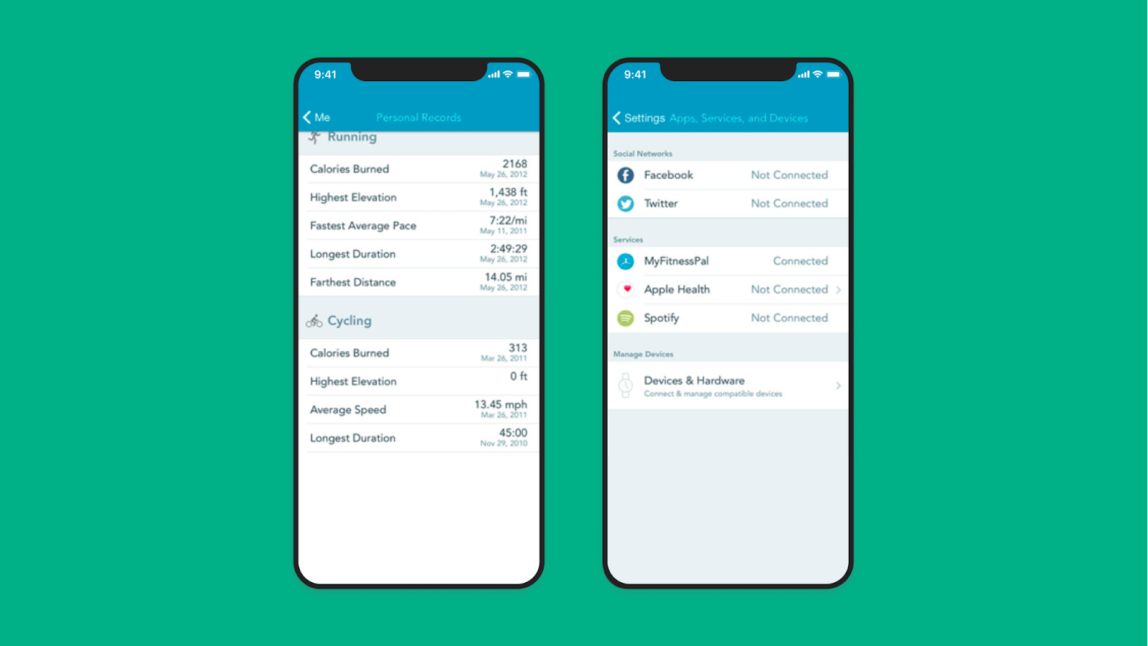Sports can be a significant part of some people’s daily lives, and modern technology has made progress tracking and other options more accessible. Smartwatches, fitness trackers, and specialized software can aid in sports-related activities. With a growing interest in healthy lifestyles and physical activity, the fitness app industry has a lot of potential. Runkeeper, a successful app in this niche, is a prime example. This article explores the challenges of creating a fitness app similar to Runkeeper and provides practical tips for finding mobile development services.
Know the Competition And Yourself
To excel in the IT industry, entrepreneurs must learn from the best, such as the Runkeeper app. It is imperative to scrutinize other run distance tracker applications to pinpoint their strengths and weaknesses in order to develop a superior solution tailored to meet the exclusive demands of customers.
Strava
The app comes equipped with a distance tracking feature as well as a training tracker that incorporates gamification elements. Stava can effectively monitor the distance and speed of your travel. Notably, the app also includes social features such as leaderboards, where users can compete with their friends and compare scores.
Map My Run
Map My Run is a mobile application that utilizes GPS and other sensors to track, display, and measure running metrics like duration, speed, and total distance. Users can access both real-time and overall statistics via the app. Those who opt for the premium plan can enjoy additional features like voice briefing and geodata.
Runtastic
Runtastic is a fitness app that provides real-time tracking and monitoring of workout metrics such as distance and intensity. The app’s workout log offers in-depth tracking that allows users to monitor their progress over a specific period. Upon finishing a workout, the data is automatically synced with Apple Health or Google Fit.
What is Runkeeper Fitness App?
Have you heard of Runkeeper? It’s an excellent health and fitness app that has achieved great success. In fact, it’s ranked 28th in the Health & Fitness category in the US, and is even the 2nd most popular app in Sweden and 4th in the Netherlands.
This is quite impressive, considering that it’s competing with other popular apps like Strava, Map My Run, and Runtastic. If you choose to upgrade to the premium version of Runkeeper, you’ll receive personalized training plans that cater to your individual goals. The app uses your phone’s GPS to track activities like jogging, cycling, and hiking, and it records details such as temperature, distance, workout time, and calories burned. Additionally, you can even take photos while you’re active.
What’s more, Runkeeper integrates with external services like Fitbit, MyFitnessPal, Google Fit, and Apple Health. The latest version of the app also allows you to listen to music on Spotify while you exercise. Furthermore, Runkeeper is compatible with both Apple Watch and Google Wear.

The reasons for the app’s popularity
The extensive range of features offered by the Runkeeper health app is the key to its success. Upon launching the app, users are prompted to set their goals and motivations, and the app has four distinct training categories, including maintaining a specific body figure, weight loss, marathon training, and proper running technique.
Runkeeper’s freemium model provides users with access to basic features for free. However, for those seeking premium features, a subscription can be purchased for a month or a year. Compared to its competitors, Runkeeper stands out with several noteworthy advantages.
- Runkeeper live tracking is precise.
- Calorie tracking.
- Different training plans are available for those planning to run marathons.
- Workout history is tracked comprehensively.
- Social and collaborative activities.
Analyzing the Business Model of the Runkeeper App
Simply having a pre-built app is not sufficient to ensure success. There are several tasks that must be undertaken, such as creating a website for the product. It is also necessary to develop a marketing strategy and other critical elements. Prior to examining the app’s features, let us first review a typical business model and marketing measures for similar apps.
Business Model Canvas
We suggest completing a business model canvas to gain a better understanding of the processes involved. Cleveroad’s team has provided a sample canvas that includes relevant research-based information on the first page. The subsequent pages offer guidance on how to approach filling out the document, along with a clear format for the final product.
Ways to Monetize Your Fitness Application
Let’s look at monetization options, as it’s an integral part of how to create a fitness app.
In-App Advertising
While this approach may work in some cases, it is generally not advisable, especially in the highly competitive fitness app market. Users who find the presence of advertisement banners intrusive may choose to uninstall your running distance app and switch to a competitor with similar features.
Paid Applications
At first, Runkeeper utilized this method to generate revenue. However, the highly competitive nature of the market made it challenging to convince users to make a purchase. As a result, Runkeeper has transitioned to the Freemium business model, as demand for the previous approach was not enough.
Freemium
Achieving a balance between open opportunities and monetization is crucial for acquiring a large user base. Having too many opportunities can discourage users from subscribing or making in-app purchases, resulting in lower profitability for the app. It is important to strike the right balance to ensure the app is widely used and profitable.
Subscription
Offering monthly or yearly subscriptions to access exclusive content is a profitable way to monetize an app. This model is widely used in various industries, such as news, lifestyle, and entertainment, and is known for providing stable revenue.

App marketing mistakes to avoid
Before starting app development, it’s crucial to consider the monetization strategy and focus on elements that can increase customer conversion. It’s also essential to take into account the platform differences between iOS, Android, and Windows Phone to develop a successful marketing strategy. Neglecting these differences could result in slow profit growth for a particular platform. Marketing strategies for step counters on Android and Windows Phone may differ significantly.
It’s important to showcase the app’s unique qualities and highlight key features when advertising on Google Play or App Store, but avoid overestimating the app’s abilities as it could negatively affect its rating. Additionally, make sure the text on the app store is comprehensive and includes relevant keywords to reach the app’s target audience.
Lifetime Value. It is crucial to remember that users may not always stay loyal to your app. To increase customer retention, it is advisable to continuously update and add new features to your app. As the app owner, you should analyze whether the Lifetime Value (LTV) of your users will cover the costs of development.
Viral marketing. Engage your app’s users in your marketing efforts. Dropbox incentivizes users to refer others to the platform by offering additional storage space.
Research is never enough. It is essential to ensure the distinctiveness of your run tracker app. Identify any shortcomings in competitors’ projects and address them with your own. If your application offers faster speeds, lower costs, or greater convenience than alternatives, it may have a higher chance of success.
Features Needed to Create a Runkeeper-Like App
After conducting research, we have compiled a list of beneficial features that you may want to consider when developing a fitness app.
MVP of your app
To create a Minimum Viable Product (MVP) for a run tracker app, consider including the following essential features:
- Registration through social networks or email
- Personal profile with customizable variables, such as weight and height
- Route tracking functionality
- Pre-made route maps
- Display of the map while the user is in motion and periodic updates of their route
- Notifications about the average tempo
- Display of the route map after the training session.
Additional features
To create a successful fitness app, it is essential to meet the core requirements identified above, as well as the additional features listed below. However, due to the competitive nature of the Health & Fitness category, careful consideration of many details is important. These additional features include:
- Audio playback during exercise
- Heart rate monitoring through Bluetooth adapters or InvenSense technology
- Training and nutrition plan assistance
- Social components, such as chat and friend referrals
- Ability to take and share photographs
- Push notifications
- Integration with social networks
- Compatibility with Apple Watch and other wearables
- Voice coach for updates on distance, time, and tempo
- User-created routes
- Weather conditions information
Remember to consider not only the features but also the marketing strategies in creating a successful fitness application.
Wrapping Up
We’ve told you the basics of a fitness software development. To know more, you can apply to a skilled outsourcing software development company, and they will eagerly help you. The experienced IT professionals will consult you as to different tech questions, and duly assist you in developing a profitable and attractive app for fitness purposes.

